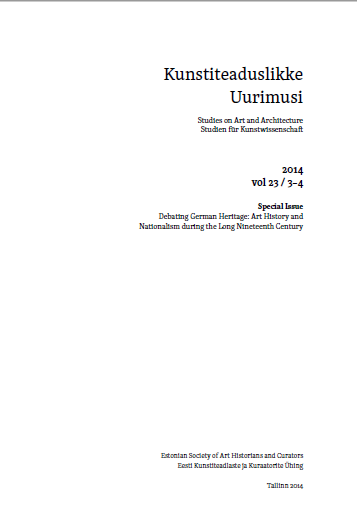Baltic Identity via German Heritage? Seeking Baltic German Art in the Nineteenth Century
Baltic Identity via German Heritage? Seeking Baltic German Art in the Nineteenth Century
Author(s): Kristina JõekaldaSubject(s): Cultural history, Architecture, Visual Arts, 19th Century
Published by: Eesti Kunstiteadlaste Ühing
Keywords: Baltic Identity; German Heritage; Baltic German Art; 19th century;
Summary/Abstract: The paper investigates the Baltic art historiography concerned with the heritage of medieval architecture in what is now Estonia and northern Latvia, aiming to detect possible conflicts and collisions – or at least a tense relationship – between a specifically Baltic identity and an inevitably German heritage. Against the background of the cultural and national aspirations of the German ‘motherland’, tsarist Russia and native Estonians/Latvians, the Baltic German identity constructions gradually became more and more pronounced in the course of the long nineteenth century. Asking when the need to differentiate between a German and a Baltic German heritage was first sensed, and when the research on this heritage was placed in the context of art history, the writings by the German-born, but Riga-based art historian Wilhelm Neumann serve as a case study. The focal point of the paper is the interrelation between the ‘discovery’ of the local heritage and the emergence of art history: the texts examined mirror the constructions of a Baltic identity, as much as they mirror the influence of the (German) discipline of art history. Can the fact that the roots of both of these were in Germany be considered a situation of double colonialisation? How independent were Baltic German authors in their opinions and conceptions? Can studies on these issues benefit from the theories of postcolonialism?
Journal: Kunstiteaduslikke Uurimusi
- Issue Year: 23/2014
- Issue No: 03+04
- Page Range: 79-110
- Page Count: 32
- Language: English
- Content File-PDF

